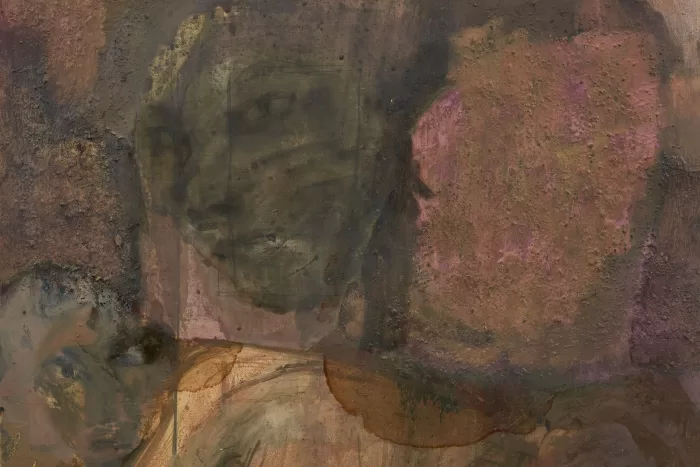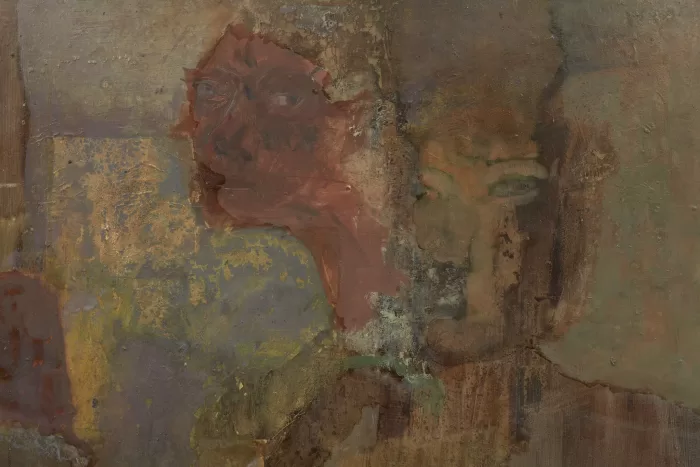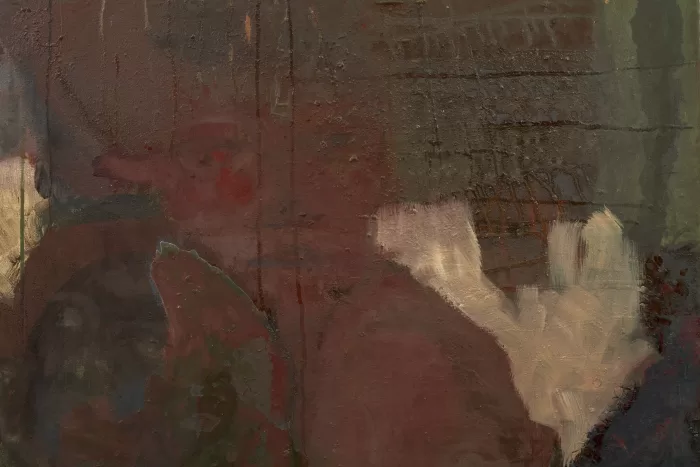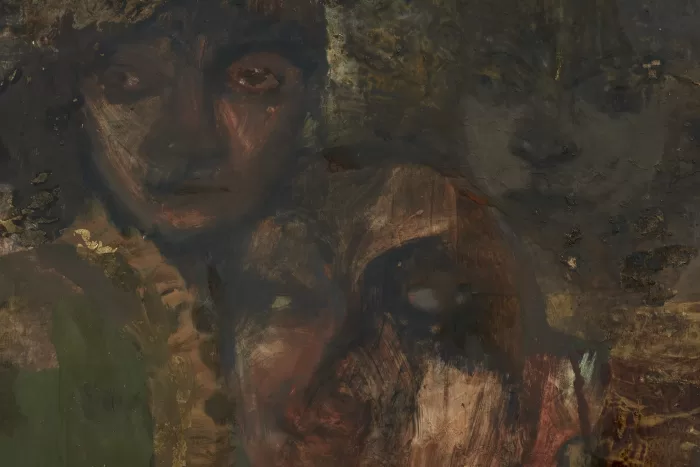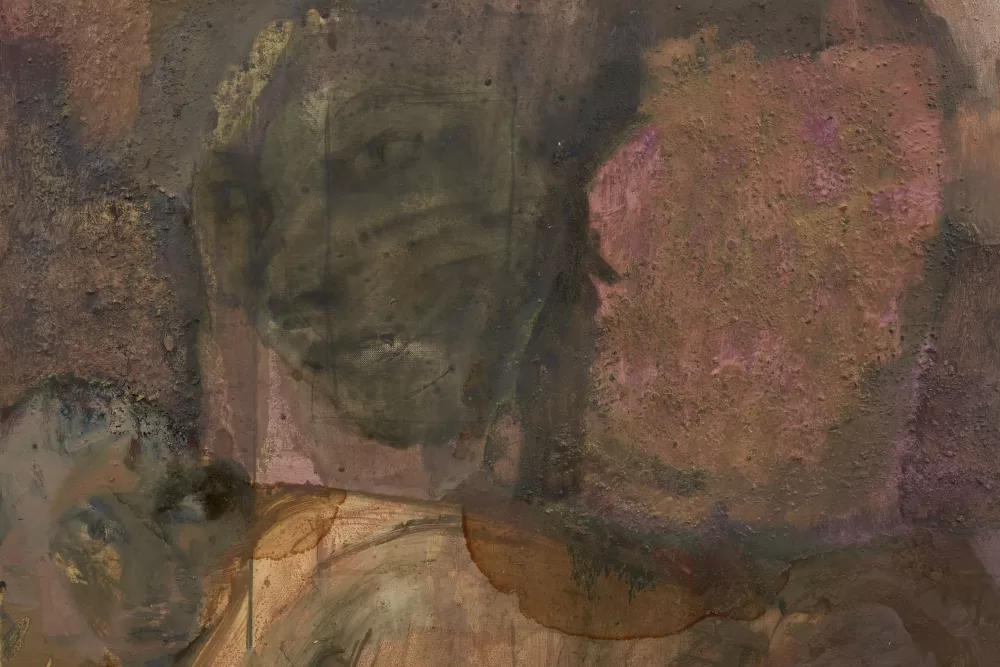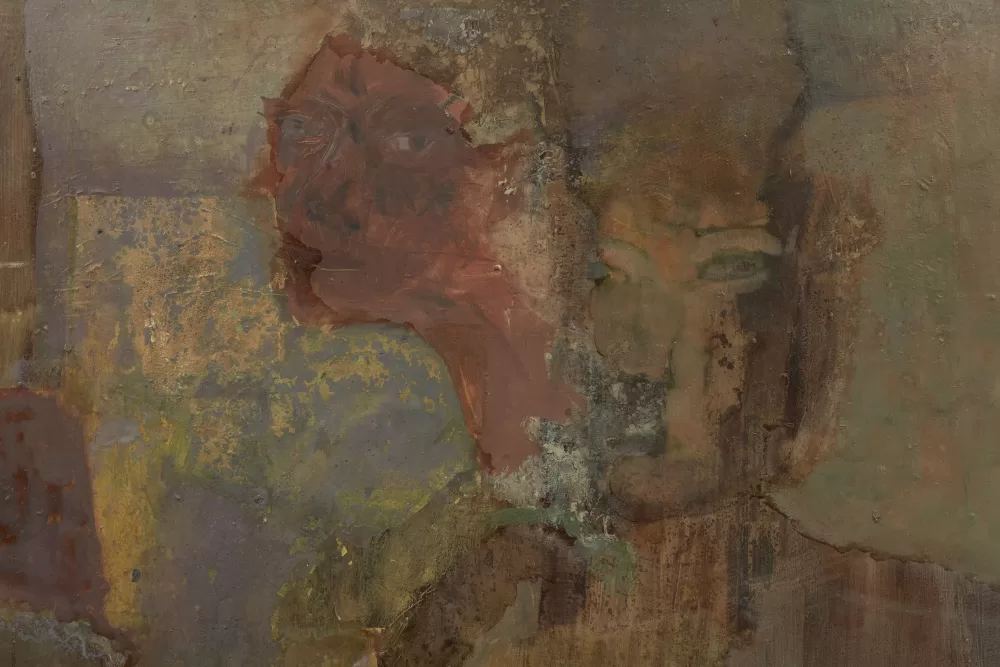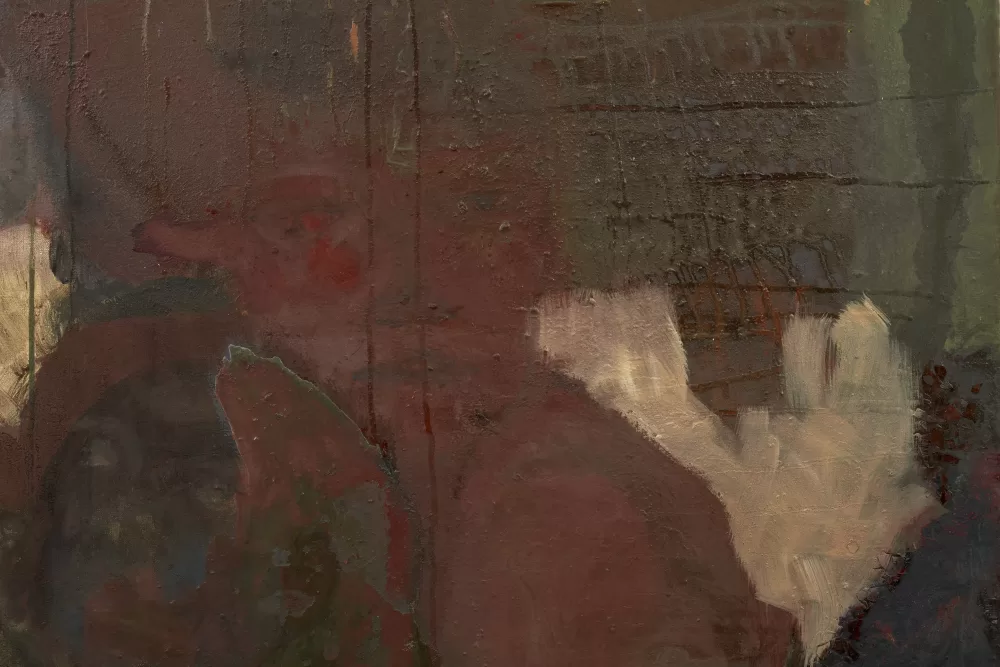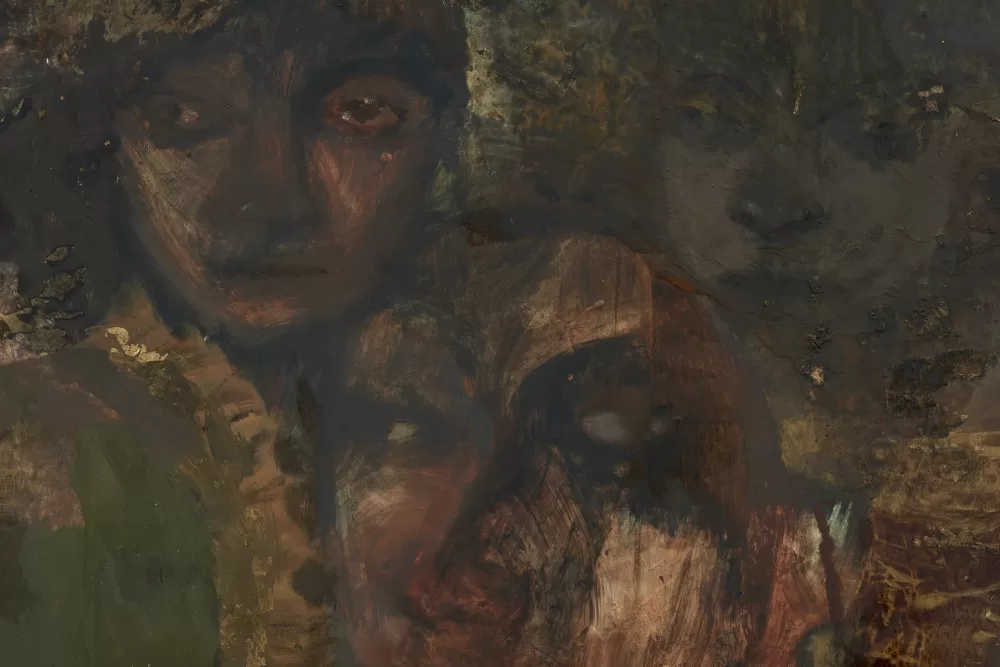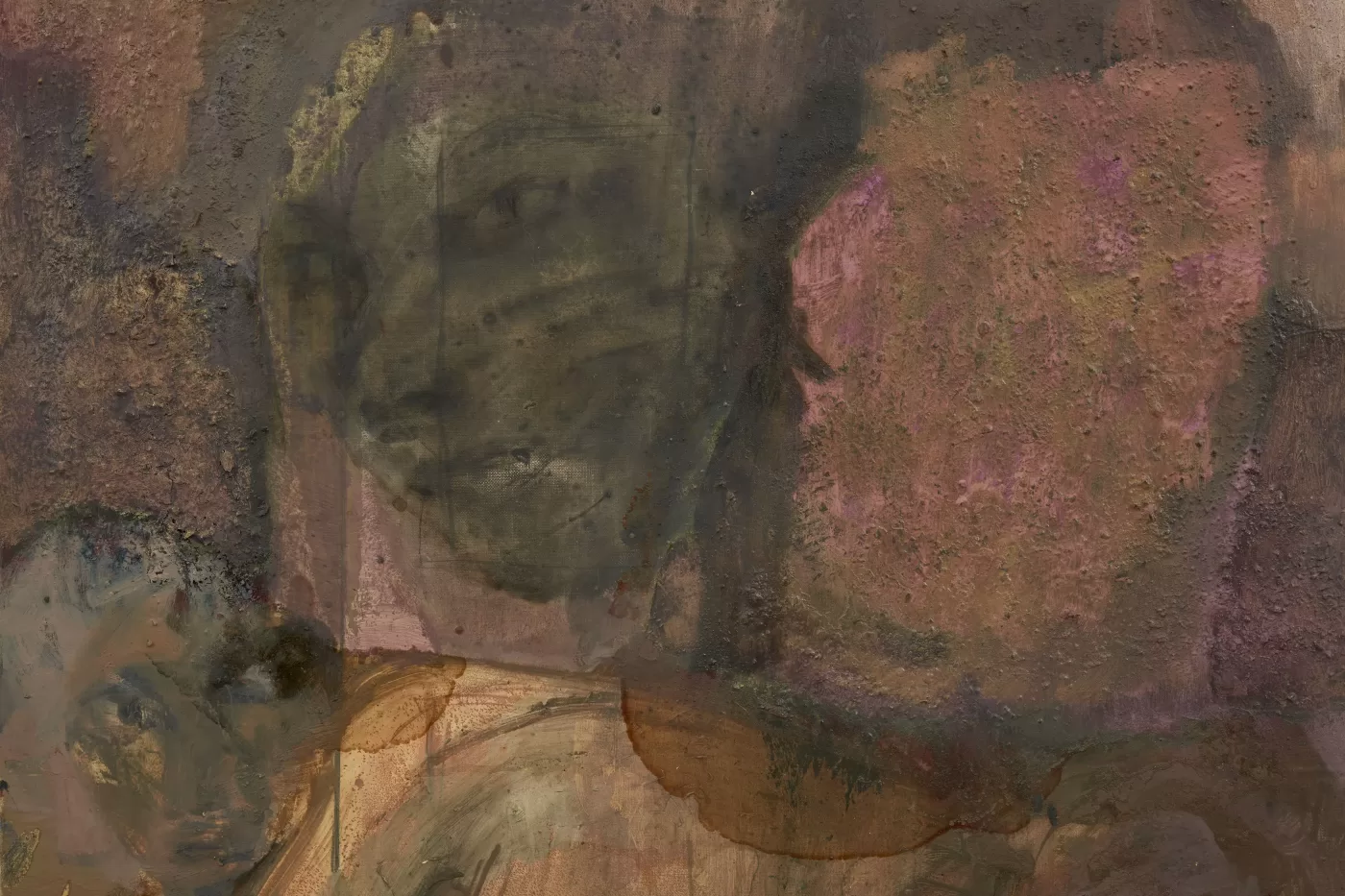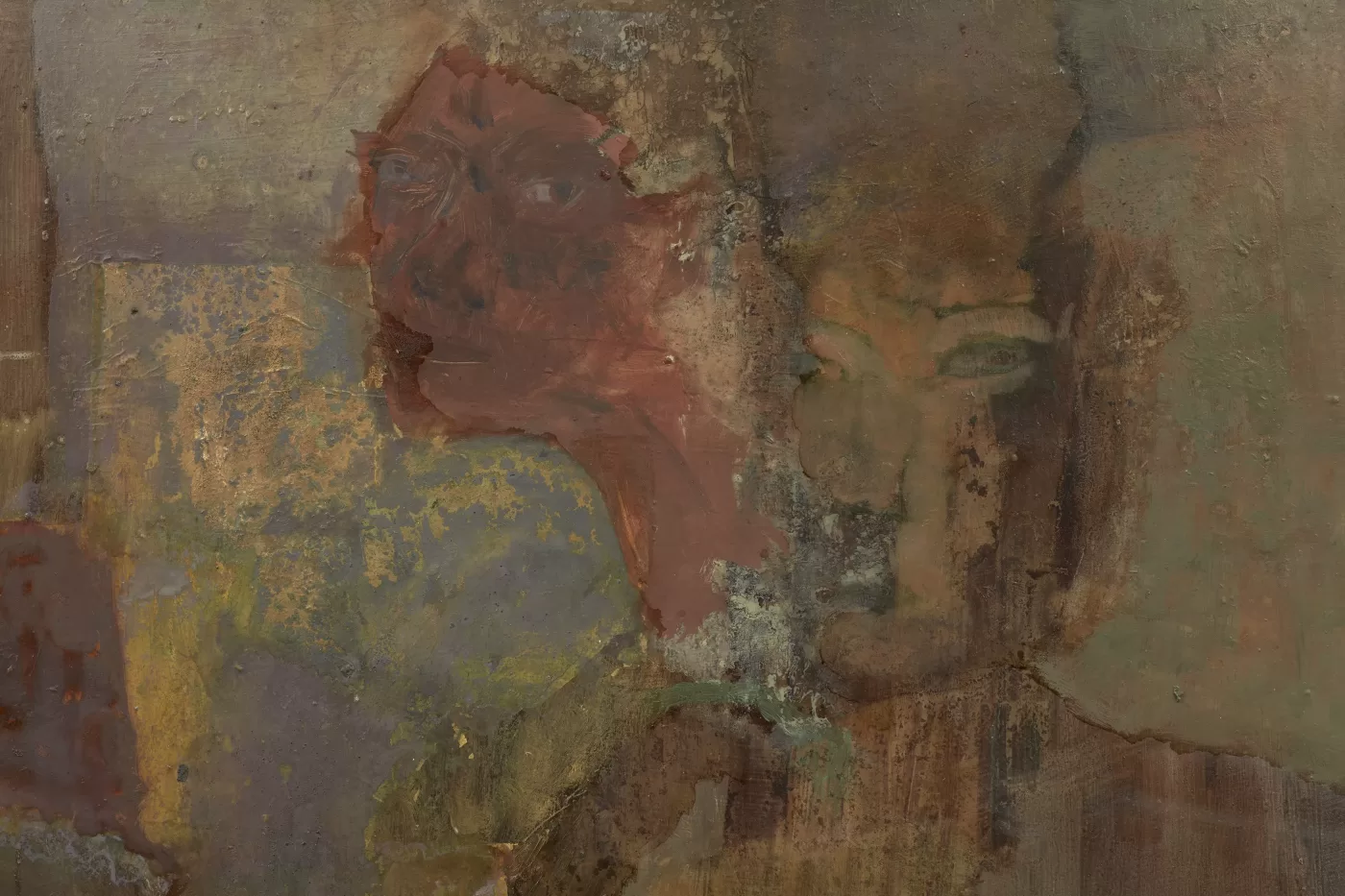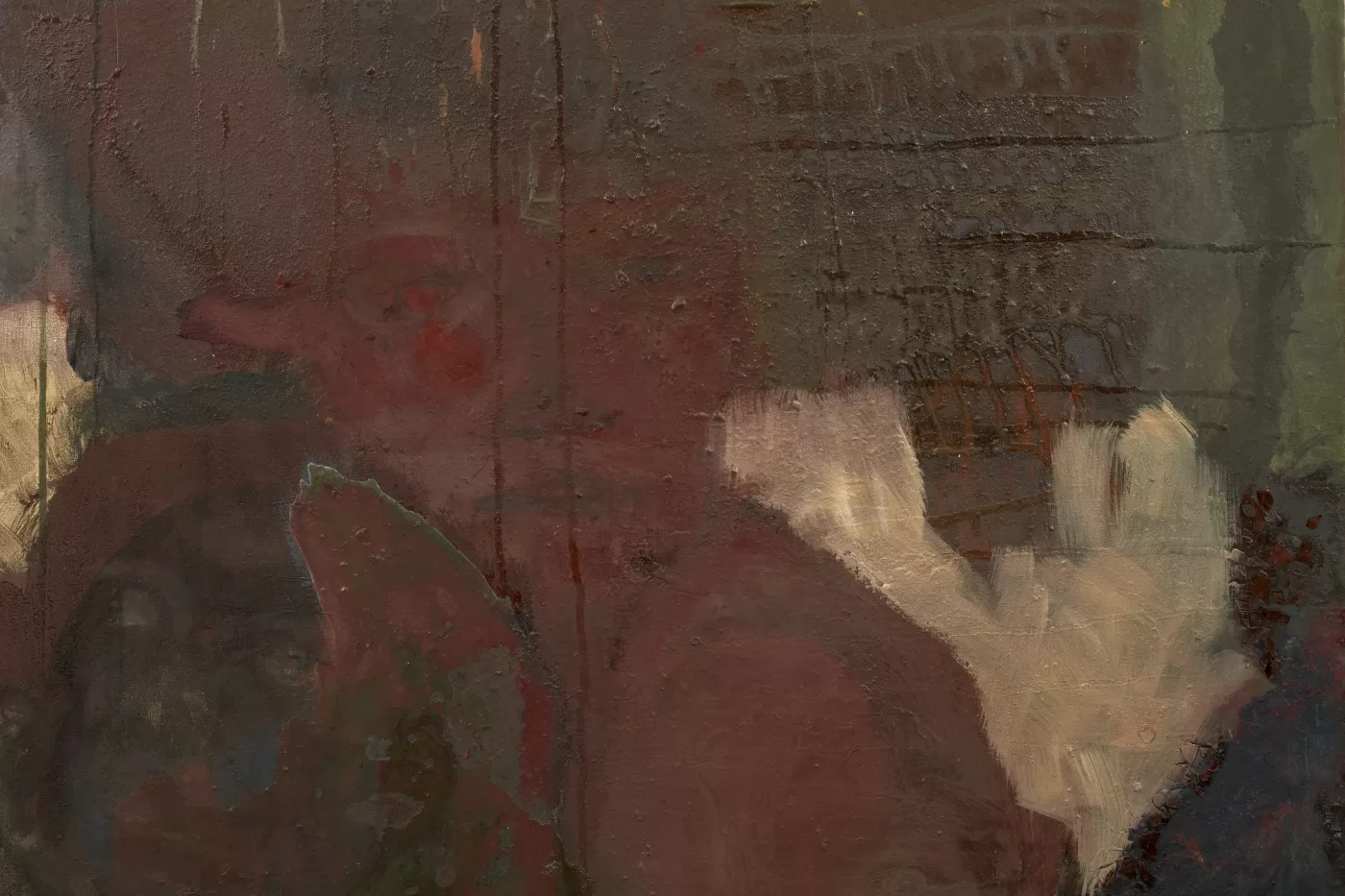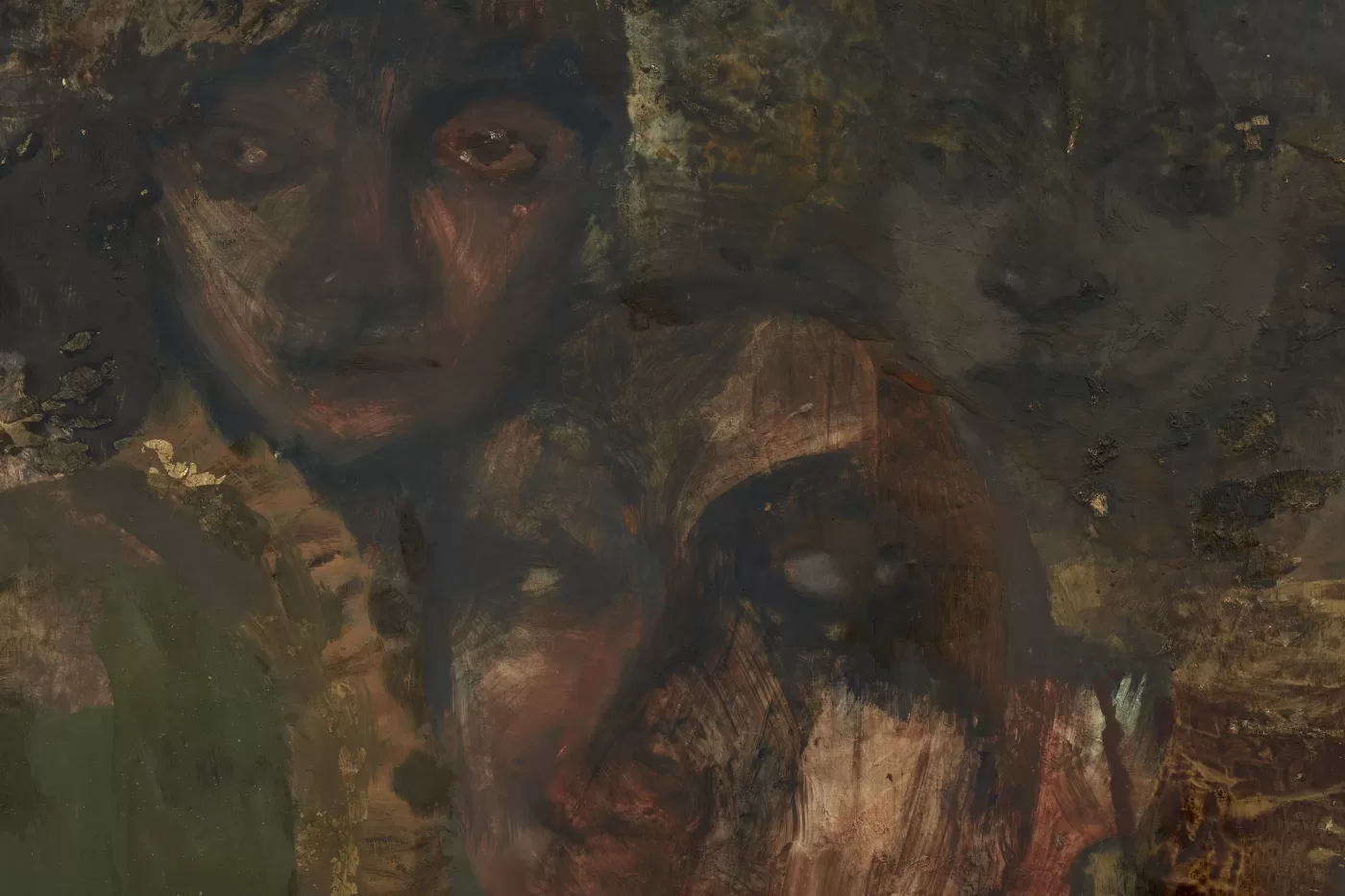Barbara Wesołowska on false memories and the spectral qualities of paint
9 min read
From her East London studio, Polish painter Barbara Wesołowska discusses spirituality and finding faces in paint
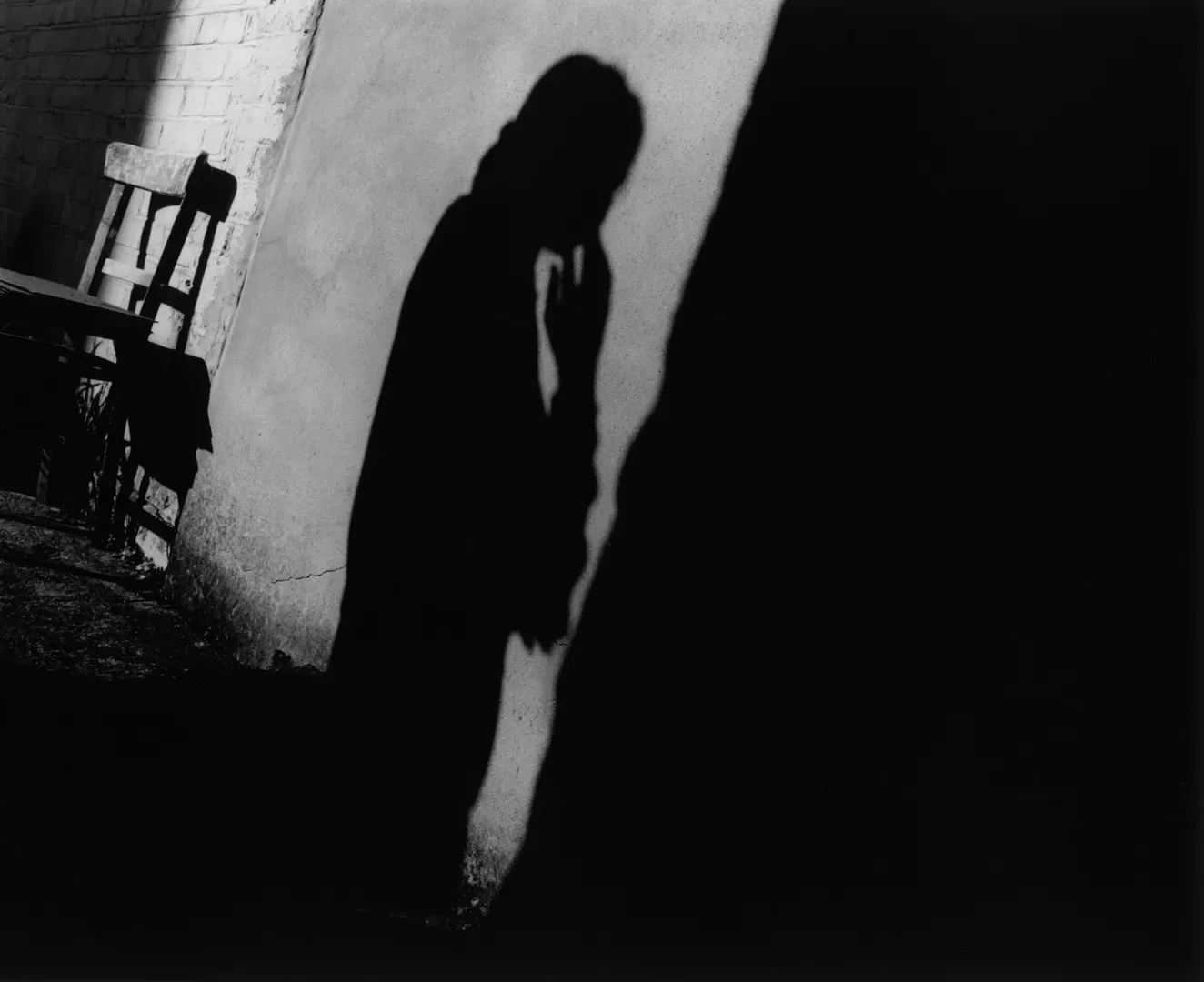
Barbara Wesołowska photographed at her East London studio
I’m at Stuart Shave’s gallery, Modern Art, on Bury Street, London, staring at a painting by Barbara Wesołowska. Somewhere in the stretched linen that looks more like a rusted metal sheet are faces. I’m waiting for them to show themselves, and in that moment, I feel the suggestiveness, fragility, and turbulence of the mind reflected in paint. I need to know more.
30 minutes later, I’m at Wesołowska’s east London studio. It’s a small, whitewashed square room with a high ceiling and open rafters, and is cool in the late summer heat. One half of the room is piled with paintings by the artist she sublets from. Wesołowska’s half is nearly empty; there are just five works on the walls. But nearly everything, from the floorboards to the chairs, to her small storage trolley is caked in thick layers of paint. Later, I would find paint all over my clothes.
Before I have a chance to sit down, Wesołowska begins talking. She was born in 1984, in Wrocław, Poland. Her family was very, very, religious and they lived on an island owned by the Catholic church. “It almost feels like I literally grew up in the church. We would go to mass every day.” she says. “Somehow, I wasn’t really exposed to art in any way, except seeing the art that was in the churches.” Aged 19, she joined the Gardzienice experimental theatre company, whose secluded, communal lifestyle and nocturnal rehearsals led by a charismatic, ego-driven director Wesołowska now compares to a cult. “There was no income. There was just a little bit of money to survive but not enough to have a life elsewhere.” After five years, she “quite literally” ran away to study painting, first at the Fine Art Academy in Wrocław and then in London at the Slade School of Fine Art and the Royal College of Arts.
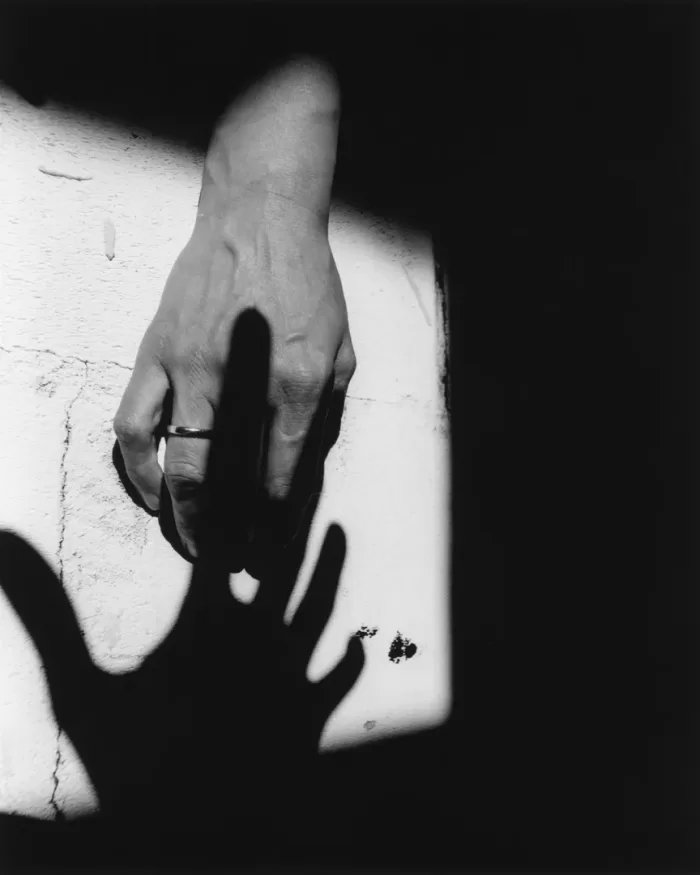

The formative experiences of the church, the theatre, and painting led to Wesołowska’s interest in compulsion, drives, and the unknown. She is fascinated by the repetition of daily life: “people doing the same over and over again not knowing why they have to do it. A sense of compulsive urgency where people return to the same image or to the same feeling.” For Wesołowska, painting is a deeply private practice which involves its own rituals. She paints every day, though she doesn’t stick to a fixed schedule. She describes painting as “solving a problem” and problems and their solutions can occur at any time. When she does paint, she paints rapidly. “There is a kind of strange need to be in a state of urgency, whether it’s pressure of time or some other pressure.”
Wesołowska works intuitively, directly on the canvas, without sketches or drawings. She emphasises that paintings are objects, and she does so by rotating the canvases to work from several angles. Sometimes she embeds small objects such as leaves and flower heads into her paintings. “I need there to be texture,” she says. Watching her, I notice she has a habit of feeling the surface of her paintings. She describes ‘finding’ faces in the abstract painting through “a series of accidents, and making accidents happen. There is a lot of spilling, there is a lot of rubbing. It has to be a particular expression that’s not too clear to me, even. I think that it’s best when a stain becomes a face.”
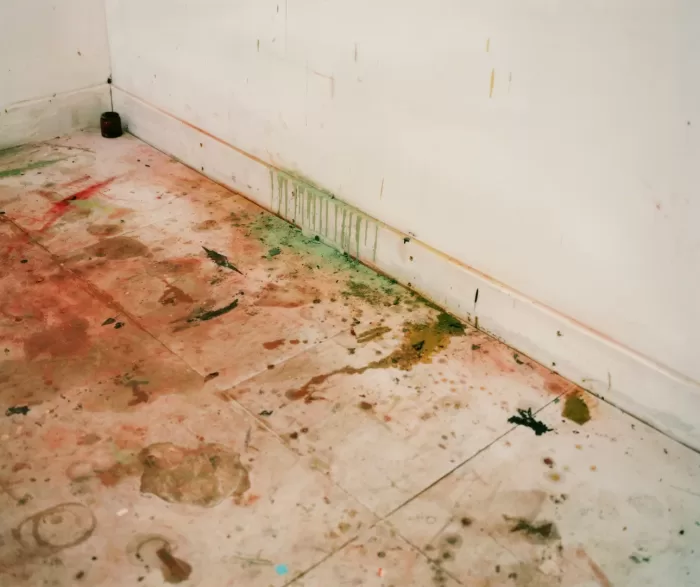
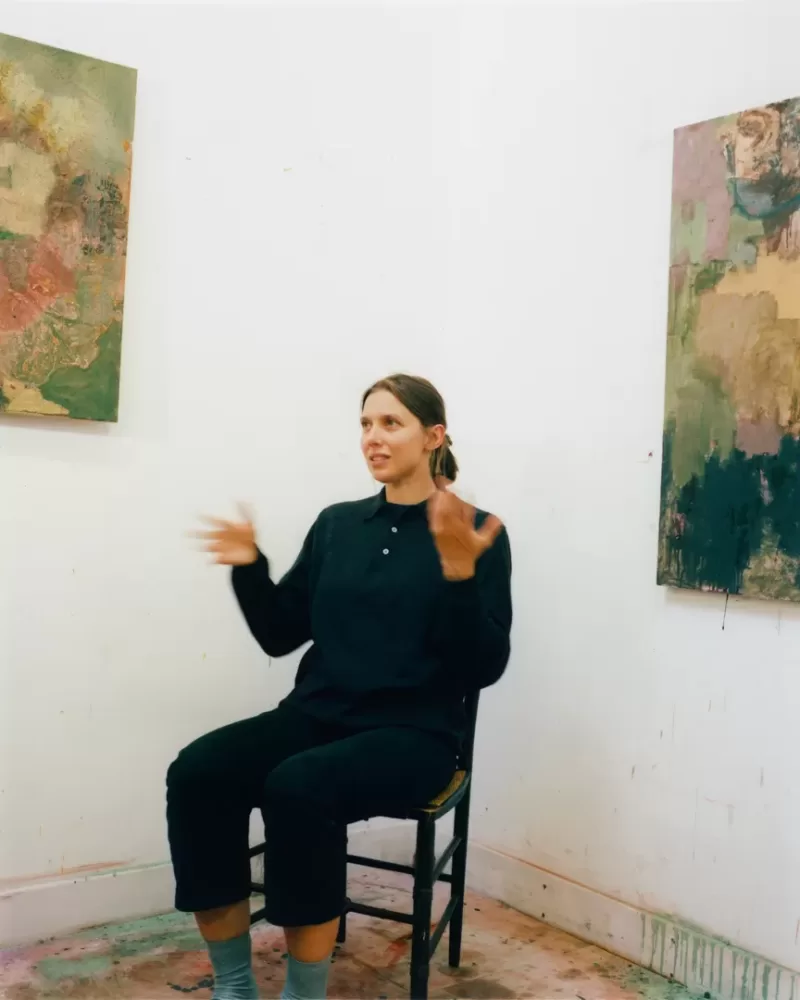
Wesołowska will try to finish paintings in one go, but admits that this is an impossible task: “I need some kind of drama to develop in the image, which can’t happen in one go, but can happen when the figures start to merge into each other, or there’s a relationship between them that’s somehow emotionally charged.” What kind of relationship is open to interpretation. She says that the figures could be parents and children, or siblings, or they could be the same figure seen multiple times, or they could be unrelated. These troubled, uncertain relationships don’t necessarily occupy the same space or time.
“I’m interested in Lacanian psychoanalysis. I think these ideas of switching roles and the idea of the body being held together by language and being able to unravel very quickly around some ideas that are not possible to capture in language is quite interesting… think about psychosis; when a psychotic person thinks there is no border between them and the world. There is no skin. Their body’s falling apart into a thousand pieces. I’m not painting that, but these are some ideas that are floating around.”
4 photos
View gallery
1 of 4
So, what is she painting? I get the sense she’s avoiding something. I ask her directly. “It’s always a little disappointing when someone tells you what’s happening or why they’re doing it. That’s why I like the interviews where they avoid answering the question or end up talking about something else. Often there is no reason, or really the work is about being able to name something, or not being able to speak about something, or treading along the edge of the gap in language. So, it’s impossible to explain, because that’s what the work is all doing; it’s marking the edges of that gap in meaning.”
She compares painting to the formation of memories. “Freud’s theory of screen memories is most relevant here. The shards, fragments of stolen, borrowed memories that stand in for the representation of the actual experience. There is a sense that there is almost no other way to construct a memory, or a painting for that matter, than to patch it together, out of these screens. In my paintings, this is very much present in the way the paint is applied and images arrived at. Not searching for truth but accepting endless doubt is part of the process.”

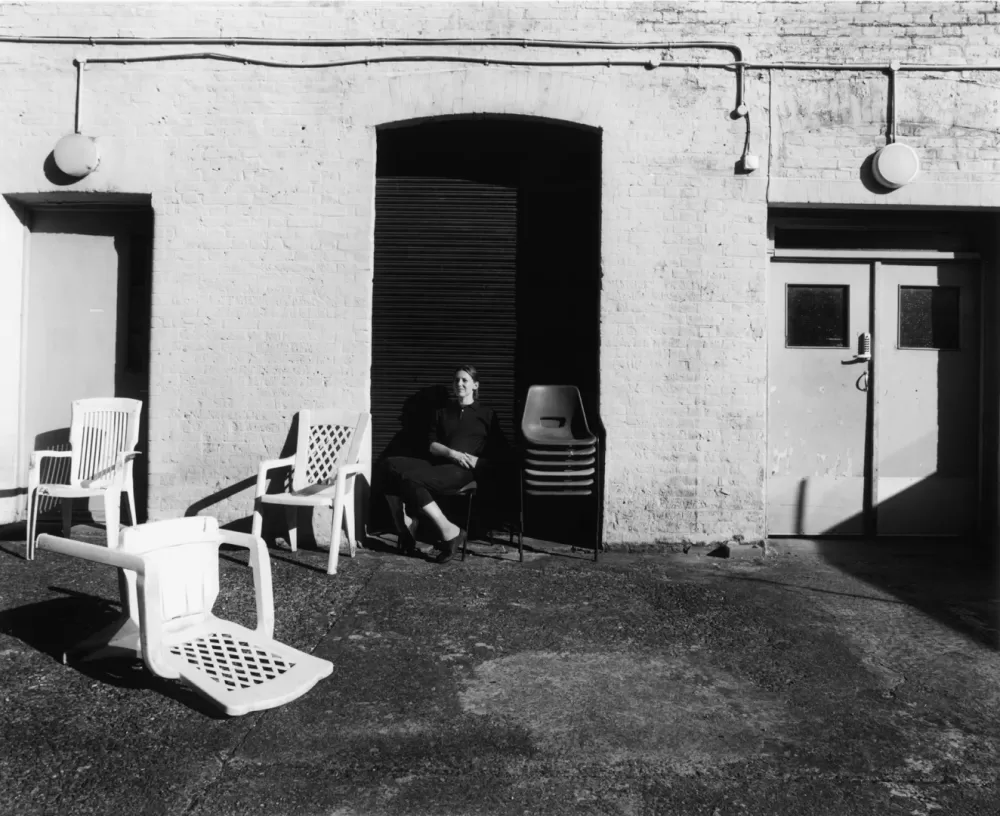
Wesołowska relates an anecdote from her youth. In 1997, there were a series of floods in central Europe. Wrocław was hit badly. She says she recalls her father and his friend having to clear the church crypt of the nuns’ flooded coffins. As soon as she’s finished saying this, she contradicts herself: “I didn’t see it. I don’t know if it really happened or if I actually made it up. Maybe it was one of these fantasies – the nursery I went to was run by nuns – so maybe it was a revenge fantasy in my head. I have no idea if it did happen, but it’s a strong image in my head. I’m not painting that, but it might be something that I’m thinking about….”
Just before I leave, a breakthrough: “I think really they have a function for me which is to deter the gaze of The Other. They almost act as armour. It’s why I’m attracted to painting as an object, you know you can almost use them literally as a shield.” She takes a painting off the wall and holds it by the crossbar, steadying herself like a riot cop. “What are you fighting off?” I ask. “Well, I can’t really say. It can’t be described in words. That’s why it’s painted.”
